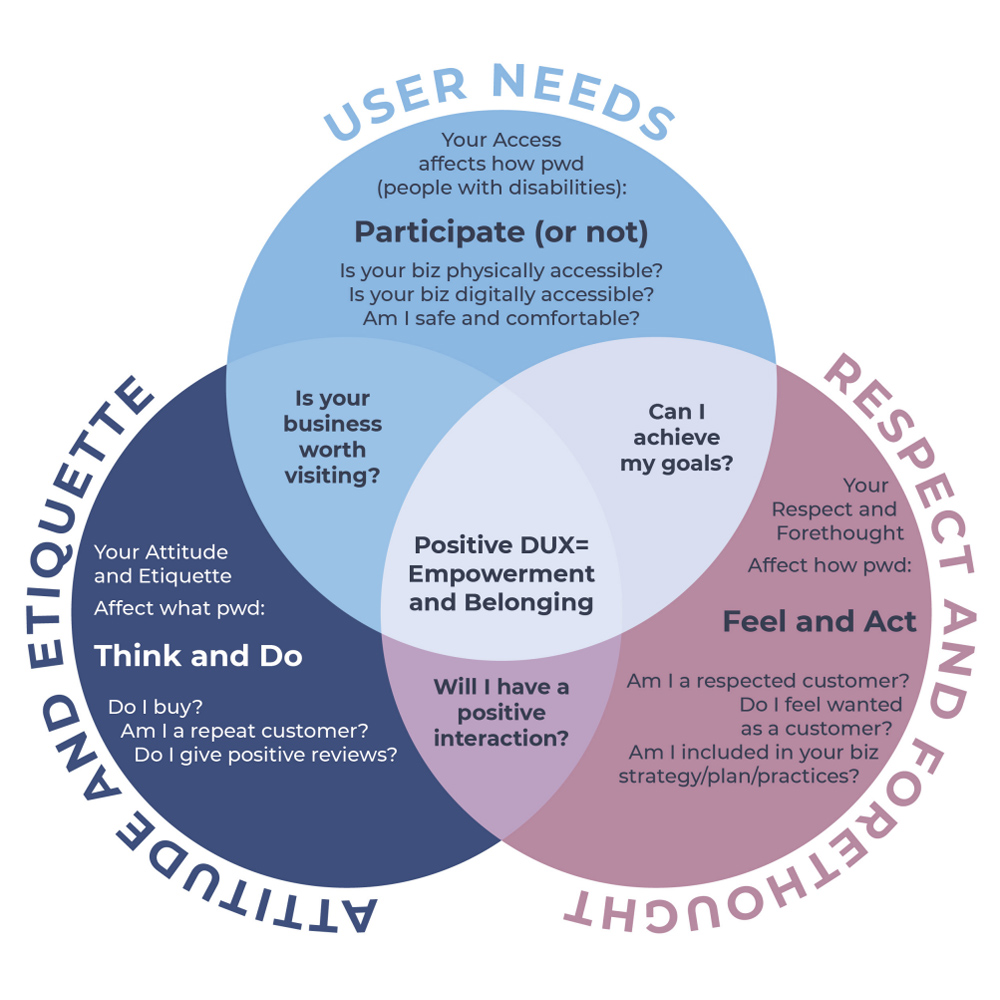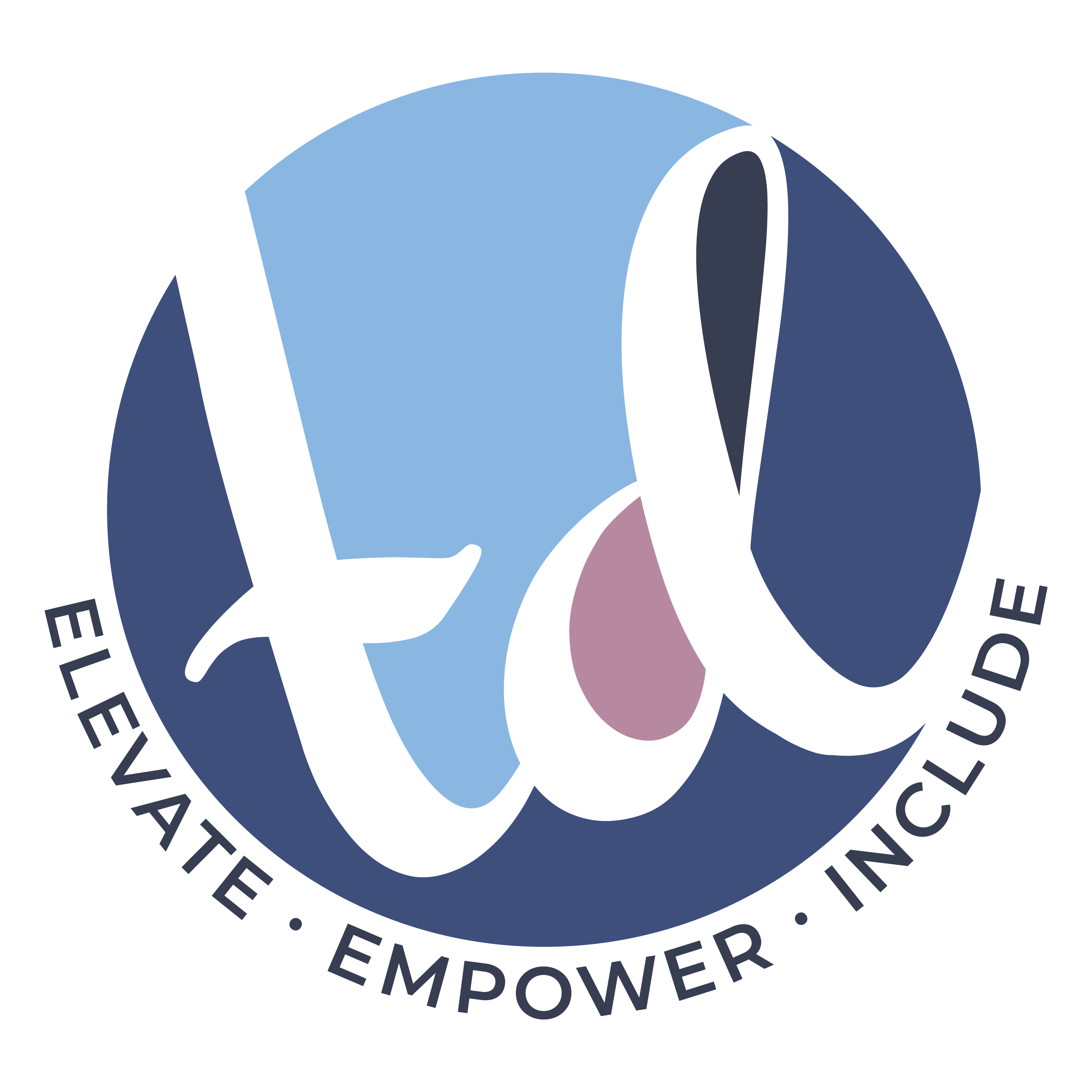UX. We see the acronym all the time to describe the experience of an end user of a business, a website or a service. But how often do we think of the individual with a disability as the end user; not just of a product or service, but of attitudes, barriers and a world that is not always inclusive? In my experience as a wheelchair user, the answer is not enough.
So, if you read the title of his page and wondered, “What does DUX mean?” I think you for taking the time to find out. It’s only fitting to me to have ducks representing this term, because of the inspiration for this concept was water. And ducks like water. So do I.
As an active individual with a disability, the Disability User Experience (DUX) sets the tone for every business I visit, every interaction I have, and the constant reminder that there are always going to be things I can’t do; not because I physically can’t do them, but because the DUX often isn’t considered.
I created the graphic accompanying this article (see link), during the pandemic when many health clubs were beginning to figure out how to safely accommodate guests. I’m a regular swimmer and after the shutdown I was dying to get back in the pool. Little did I know it would be so difficult…

User Needs
Do I have knowledgeable staff? Does my staff engage in disability awareness training? Is my business accessible (physically and digitally)? Is my adaptive equipment in good repair and my staff knows how to use it?
Attitude & Etiquette
Does my staff treat pwd as a burden or valued customer?
Do my employees or processes make pwd feel they don’t deserve the same rights as others? Do I understand the concept of forced intimacy and exclude it from biz practices? Do I take disability out of the equation to base responses?
Respect & Forethought
Is it evident I have thought about pwd? Do I respect people’s differences? Do pwd feel welcome within my biz?
